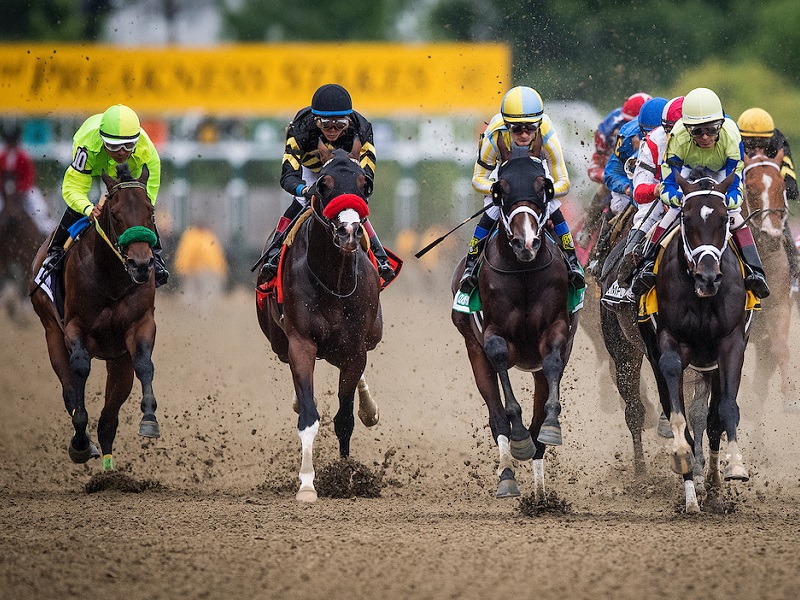by Jeremy Plonk
May 14, 2018

Not a whole lot in life happens in two weeks, and what little I can think of would not be considered positive. Even the Barenaked Ladies sang about “One Week,” not two. Instead, you give or get two weeks’ notice when a job doesn’t work out and you’re ready for something new. Further, there are two weeks between the NFL’s conference championship games and the Super Bowl, what seems to be an eternity to wait each year in late January.
And, then there’s the Kentucky Derby-Preakness interval. Two short weeks. A mere 14 days. Annually, it’s the second-most talked about element to the Triple Crown’s middle jewel. “Can the Derby winner do it again?” always reserves the No. 1 spot for Baltimore banter.
Two weeks sure gets a lot of chatter in the days between the first and third Saturday in May. The quick turn-around in modern Thoroughbred parlance can be the difference between regality and regression. No doubt this is a much different era than when a would-be Preakness contender would actually get a tune-up at Havre de Grace just to keep sharp after the Kentucky Derby. But is the fear warranted?
I put the outstanding handicapping software Betmix to work to see if the numbers offered any support for the two-week turnaround anxiety bandied about by horsemen and horseplayers alike. The results were statistically pretty conclusive and consistent as I examined all races since the beginning of 2012, a good modern sample size in training amidst the era of limited starts, out of competition recovery medications and the like.
All starters at all class levels:
All starters in stakes races:
All starters in graded stakes races:
All starters in Grade 1 stakes races:
As you can see based on class, horses with more than 2 weeks’ rest out-perform those on short rest by a pretty significant margin from about 2 to 3.5% at each level. The tougher the races become, the larger the spread becomes between successful horses with more than 2 weeks’ rest vs. those on short rest.
Given that turn-around time, recovery and potential rest would seemingly be important points to the stamina issue, I also ran the Betmix data to factor in the distance of races. Sprints and routes are the most common division in distance in Thoroughbred racing, so we broke down the numbers based on races less than 1 mile (sprints) and races at 1 mile or longer (routes).
All starters in races less than 1-mile:
All starters in races 1-mile or longer:
Again, horses with more than 2 weeks between starts performed at a higher percentage than those on quick turn-arounds whether sprinting or routing. That’s consistent with what we saw over all class levels as well as the elite class levels. The notable point here is that the win percentages for each type of layoff horse was nearly identical whether sprinting or routing, so perhaps it makes the point not so much about fitness in terms of endurance, but rather the argument that you’re either ready to run or you’re not, regardless of the distance assignment.
Finally, I looked at the apples-to-apples discussion in Preakness terms of the 3-year-old racehorse. Is the sophomore more or less capable than an older horse of handling the 2-week interval?
All starters in races restricted to just 3-year-olds:
Again, those with the longer rest interval outperformed the quick turn-arounds even in the straight sophomore ranks. The margin between the two is 2.2%, slightly better on the quick return than the overall population (2.9% spread) and more productive than in Grade 1 stakes overall at all ages (3.6%).
The numbers do indeed bear out some of the fear. It’s hard to find any situation where it’s best to be returning on the quick rest, except the Preakness Stakes itself. Here, 14 of the last 16 winners at Old Hilltop were horses coming off 2-week breaks (13 from the Derby, along with Rachel Alexandra’s 15-day hiatus after the Oaks). From Bernardini (2006) until Cloud Computing last year, 10 straight Preakness winners made their hay on the short rest.